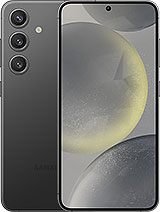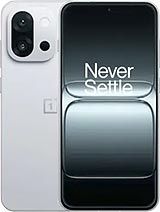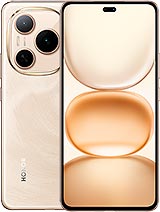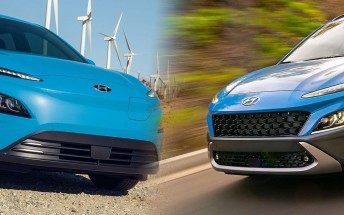Samsung Galaxy S24 vs. Google Pixel 8
If you are in the market for a compact flagship in the first half of this year, you are probably eyeing the Samsung Galaxy S24, Google Pixel 8 or Xiaomi 14. But with the Xiaomi 14 asking a price premium, this leaves the Galaxy S24 and the Pixel 8 as the more sensible duo.
Table of Contents:
The two handsets have similar hardware and dimensions, so we can see why some users would find it hard to make a choice, so let's dive in.
For starters, you can compare the complete specs sheets or directly continue with our editor's assessment in the text further down below.
Size comparison
Aside from the glaring design differences, the two devices are pretty similar size-wise. The Pixel 8 is ever so slightly taller and a tad thicker but retains the same screen diagonal.
As a result, the Galaxy S24 feels a bit smaller in the hand, but not necessarily nicer to handle. The flat edges and sharp angles are trendy, but some may find it more awkward to hold, compared to the Pixel 8. The latter has a curved side frame and oval edges for a more comfortable grip.
As always, design is largely subjective. The Galaxy S24's looks are more trendy, and the Pixel 8's camera bump may not be everyone's cup of tea. On the other hand, the unorthodox design of the Pixel 8 is more recognizable.
When it comes to materials and build, the two devices are almost identical - Gorilla Glass Victus 2 for the Galaxy and Gorilla Glass Victus for the Pixel 8. IP68 certification against water and dust is present for both devices.
Display comparison
The two handsets offer the same 6.2-inch display size, the same 1080p+ resolution, 120Hz refresh rate, HDR10+ support, and according to our tests, the two can boost up to 1,400 nits, which is more than enough for comfortable outdoor use.
Still, the Galaxy S24 has the technological advantage as it uses an LTPO OLED panel, which means more granular refresh rate control, which in turn means potential power savings.
The S24's frontal design is somewhat nicer too. The bezels are thinner, allowing for a bigger screen-to-body ratio.
Another thing to note is that the Galaxy S24 has arguably a superior fingerprint reader. We tend to prefer the ultrasonic fingerprint reader as it has better reliability and is less affected by ambient light and dirty fingertips compared to optical ones. Also, the Pixel 8's fingerprint scanner is still a tad slower than the competition.
Battery life
Just by looking at the specs sheet, one would assume the Pixel 8 has longer battery life as it's packing a bigger cell - 4,575 mAh vs. the S24's 4,000 mAh unit. However, the latter has the upper hand, as evident from our tests.
As you can see, the S24 has a longer Active Use Score by posting slightly better call runtimes and better video playback. Web browsing and gaming scores are pretty similar, though.
At the end of the day, the Galaxy S24 has a more efficient hardware + software combo. We don't know which factor contributes the most, but the newer Exynos 2400 and the LTPO OLED probably have the biggest contribution.
Charging speed
The Galaxy S24 and the Pixel 8 are both quite slow when it comes to charging. The S24 supports up to 25W over the Power Delivery 3.0 standard, while the Pixel 8 can do 27W over PD 3.0. The difference is negligible, though, as both handsets take about 1 hour and 15 minutes to complete a full charging cycle.
Wireless charging is available for both devices - 15W for the S24 and 18W for the Pixel 8.
Speakers test
According to our loudspeaker test, the two competitors offer similar loudness, with the Galaxy S24 being just a tad louder. Still, both speaker setups are rated as "Very Good".
The Galaxy S24 is the clear winner here, thanks to its better tuning. The Pixel 8 sounds shallow compared to the S24, as the latter demonstrates deeper bass and fuller overall sound. On the other hand, the Pixel 8 has cleaner vocals, so listening to podcasts and watching movies on the loudspeakers may actually be better on Google's phone.
Performance
While the Galaxy S24 is powered by this year's Exynos 2400, the Pixel 8 is running on almost a year-old Tensor G3 SoC. Additionally, Google Pixels have never been particularly competitive in raw performance and have always dragged behind the competition in benchmarks.
This comparison is no exception. With pure CPU loads, the Tensor G3 falls short of the Exynos 2400 in multi and single-core scenarios. The newer Exynos 2400 is 35% faster in the multi-core scenario and about 23% faster in the single-core test.
In a combined workload, which takes into account the GPU's performance as well, the S24 is 32% faster.More than 30% difference in these tests indicates sensibly better performance, but the Exynos 2400 is also touted to be better in AI-related tasks thanks to its powerful NPU and even edges out the Snapdragon 8 Gen 3 in games where ray-tracing is available, so it's probably safe to assume that the Tensor G3 will drag behind in real-world gaming as well.
Camera comparison
The Galaxy S24 and Pixel 8 feature offer different main camera sensors, with the Pixel 8 having the bigger of the two. The S24's 50MP snapper is 1/1.56", while the Pixel 8's sensor measures 1/1.31". It also has larger pixels and is aided by laser AF and a wider f/1.7 aperture.
But hardware is half the story. Processing is the other half. Despite Samsung's efforts for a more toned-down and natural-looking processing for its flagships this year, it outputs photos with more vivid colors and more aggressive HDR processing.
The Pixel 8, on the other hand, goes for deeper shadows, more accurate color reproduction and pulls ahead with overall sharper and cleaner images. Moreover, the Pixel 8 is more consistent in various scenarios and keeps the noise to a minimum in indoor scenarios. The same cannot be said about the S24.
![]()
![]()
![]()
Samsung Galaxy S24: 0.6x • 1x • 3x
![]()
![]()
![]()
Google Pixel 8: 0.6x • 1x • 2x
And even though the Pixel 8 offers excellent 2x zoom mode, it's just not enough to beat the Galaxy S24's 3x telephoto camera in terms of reach and overall quality. The S24 is the more versatile cameraphone.
When it comes to ultrawide camera performance, it's hard to tell which is better. Overall quality is very similar. In some cases, the S24's camera is sharper (especially with foliage from afar), but in others, the ultrawide on the Pixel 8 outputs cleaner overall images. The S24 maintains better quality indoors, though.
![]()
![]()
![]()
Samsung Galaxy S24: 0.6x • 1x • 3x
![]()
![]()
![]()
Google Pixel 8: 0.6x • 1x • 2x
Video quality is very similar as well. The Pixel 8 tends to record videos with warmer color temperature, punchier colors and slightly more detail. Nonetheless, the differences are hard to spot.
Verdict
Software UI preferences aside, the Galaxy S24 may actually offer more for its asking price. Sure, the Pixel 8 is more than €150 cheaper in Europe and $250 in the US, but it struggles to keep up with the Galaxy in key areas.
The S24 has a more advanced display, more powerful chipset, likely a tougher build, more versatile camera experience (has a 3x telephoto camera), nicer stereo speakers, better fingerprint reader and longer battery life. Also, both companies commit to long-term software support for their flagship phones, so you will enjoy either of them for years to come.
The only real advantage of the Pixel 8 is the main camera, which delivers better stills and maybe even better videos too.
If you are in the US, going for the Pixel 8 may be a bit more sensible if you are on a budget, as the price difference isn't negligible. In Europe, you'd have to decide for yourself whether the price gap is justified for the Galaxy S24's better hardware and performance.
- The flatter design, thinner bezels.
- The longer battery life.
- The slightly louder and nicer speakers.
- The dedicated 3x telephoto camera.
- The faster chipset.
- The feature-rich One UI.
Get the Samsung Galaxy S24 for:
Reader comments
- Anonymous
- 15 Dec 2024
- 6p{
Buying a new phone after 5 years. I see some people saying that both phones are sh*t. Please recommend a phone in same budget.
- ulv
- 10 Oct 2024
- pRa
This review gets it right from the start. I confirm after holding them both, that while S24 is shorter and lighter, is not as comfortable to hold as the Pixel. It feels akward in my hand.






 OnePlus
OnePlus Samsung
Samsung Oppo
Oppo Samsung
Samsung Honor
Honor


